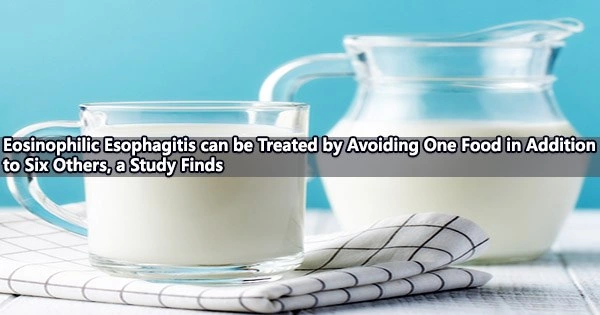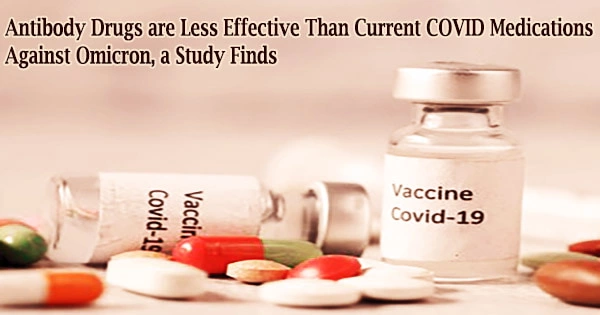According to a scientific investigation supported by the National Institutes of Health, removing animal milk from the diet of individuals with eosinophilic esophagitis, or EoE, is just as helpful as removing animal milk along with five other common foods.
Eosinophilic esophagitis (EoE) is a chronic, allergic, inflammatory disorder of the esophagus that is characterized by the presence of high levels of eosinophils in the esophageal tissue. Eosinophils are a type of white blood cell that play a role in the immune response to allergens and parasites.
According to the researchers, a more restricted diet may aid in remission for EoE patients whose condition persists despite giving up animal milk. These findings were published today in the journal The Lancet Gastroenterology & Hepatology.
“Diet-based therapy for eosinophilic esophagitis will be much easier to follow for many people if it involves cutting just one food from the diet rather than six,” said Hugh Auchincloss, M.D., acting director of the National Institute of Allergy and Infectious Diseases (NIAID), part of NIH.
EoE is a chronic condition marked by an overpopulation of eosinophils, or white blood cells, in the esophagus. Food-induced allergic inflammation damages the esophagus and prevents it from functioning normally, which is how the disease is fueled.
Diet-based therapy for eosinophilic esophagitis will be much easier to follow for many people if it involves cutting just one food from the diet rather than six.
Hugh Auchincloss
Even little amounts of food can cause painful and unpleasant choking fits for those who have EoE. About 160,000 people in the United States are living with EoE. Excluding certain foods from the diet has been a cornerstone of EoE treatment.
During the early 2000s, researchers found that eliminating six common food triggers of esophageal injury milk, egg, wheat, soy, fish and nuts substantially reduced signs and symptoms of EoE. This six-food elimination diet (6FED) became a common approach to managing the disease.
In recent years, researchers have attempted to treat EoE in some cases by removing one to four of the most popular food antigens from the diet. The relative dangers and advantages of cutting out many foods vs a small number of foods to begin diet-based therapy are still unknown.
The new findings come from the first multi-site, randomized trial comparing the 6FED with a one-food elimination diet (1FED) in adults with EoE. The trial was co-funded by NIAID, the National Center for Advancing Translational Sciences, and the National Institute of Diabetes and Digestive and Kidney Diseases, all part of NIH. Marc E. Rothenberg, M.D., Ph.D., the senior author of the published study, is director of both the Division of Allergy and Immunology and the Cincinnati Center for Eosinophilic Disorders at Cincinnati Children’s.
The trial involved 129 adults ages 18 to 60 years with a confirmed EoE diagnosis, active EoE symptoms, and a high number of eosinophils in esophageal tissue. Participants who signed up for the experiment at one of the 10 American hospitals that are a part of the Consortium of Eosinophilic Gastrointestinal Disease Researchers, a project financed by the National Institutes of Health.
Participants were assigned at random to either the 1FED, which eliminated only animal milk from the diet, or the 6FED. After six weeks of adhering to their prescribed diet, they had an upper endoscopic examination and an esophageal tissue sample. The subject left the research if the amount of eosinophils in the tissue suggested that EoE was in remission.
If EoE was still active, patients on 1FED could switch to 6FED, while those on 6FED could take topical steroids orally for six weeks, followed by another exam and tissue biopsy.
After six weeks of diet therapy, the researchers discovered that 34% of patients on 6FED and 40% of participants on 1FED had achieved remission, a difference that was not statistically significant.
The two diets also had comparable effects on a number of other metrics, such as a decrease in EoE symptoms and an improvement in quality of life. Thus, 1FED and 6FED were equally effective at treating EoE, an unexpected finding.
The researchers also found that more than 80% of the individuals who did not respond to 6FED were able to achieve remission with oral steroids, compared to less than 50% of those who did not respond to 1FED.
According to their findings, 1FED is a viable first-line diet therapy choice for individuals with EoE, and those who do not experience remission after 1FED or 6FED have access to beneficial interventions.
















